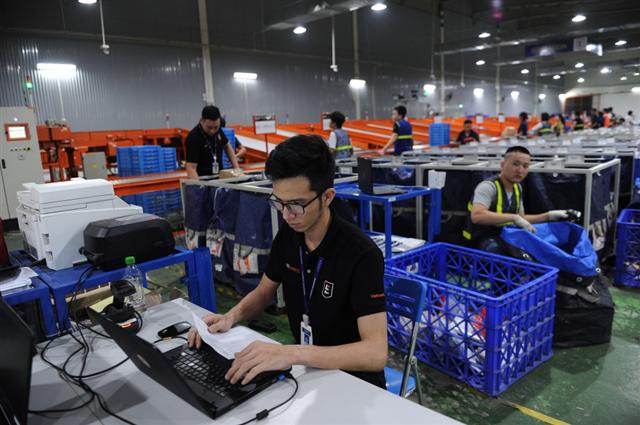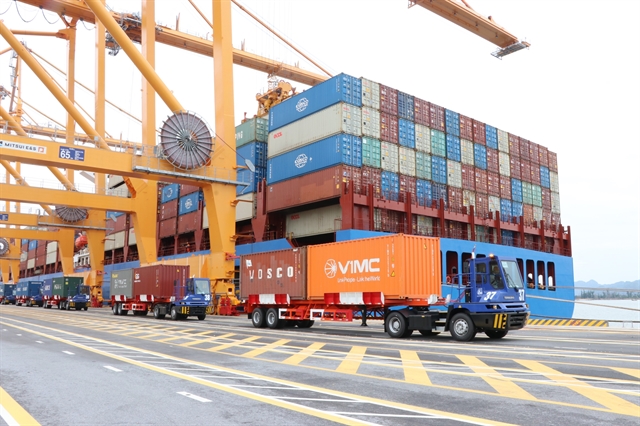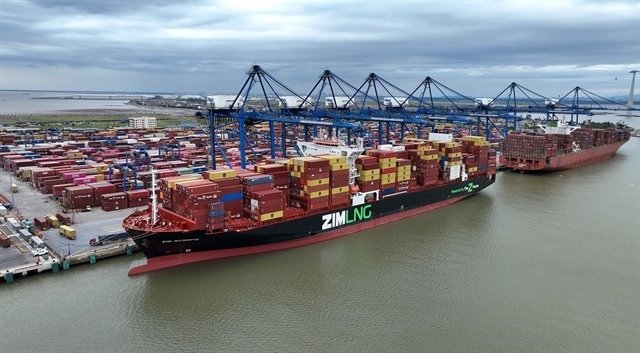Vietnam places focus on e-commerce to improve business competitiveness
Vietnam places focus on e-commerce to improve business competitiveness
E-commerce helps businesses improve their competitiveness, especially small and medium-sized enterprises (SMEs), by saving costs on rental fees, labor, advertising and sales.
|
Growth rate of 20-30 percent
E-commerce is one of the pioneering fields of the digital economy, with advanced technologies widely applied to increase the efficiency of the business cycle, modernize distribution, improve competitiveness, and promote the development of domestic and export markets.
According to the Vietnam’s E-Commerce White Book 2020, the size of Vietnam’s e-commerce market in business-to-consumer (B2C) models grew on average 20-30 percent annually, with 2019 revenues reaching US$10.08 billion and the estimated value of online shopping reaching US$225 per capita (the highest in the region).
A growing number of Vietnamese businesses have applied e-commerce to support imports and exports in keeping with the rapid global cross-border e-commerce growth, said Deputy Director of the Vietnam E-Commerce and Digital Economy Agency under the Ministry of Industry and Trade (MoIT) Nguyen The Quang.
According to Nguyen Thuy Anh, Head of the Digital Economy Application Research Department under the Vietnam E-Commerce and Digital Economy Agency, the size of Vietnam’s B2C e-commerce market, including revenue of all goods and services sold through e-commerce channels, has increased continuously over the past five years. In 2015, some 30.3 million Vietnamese shopped online; in 2019, this number reached 44.8 million. The value of per capita online shopping has grown commensurately, from US$160 in 2015 to US$225 in 2019.
Although the Covid-19 pandemic has a negative impact on the global economy and commerce, Vietnam’s 2020 e-commerce revenues will still grow at a double-digit rate, Anh emphasized.
According to Tran Xuan Thuy, director of Global Selling Amazon Vietnam, the e-commerce growth in 2020 will exceed six times that of traditional sales. In particular, cross-border e-commerce is forecast to exceed US$3,300 billion in the next two years.
In the context of the pandemic, online sales channels have proven the safest way for consumers to shop for essential items. The transition from direct to online shopping will continue to develop in the long term, Thuy added.
Increased savings
|
A recent report published by the World Trade Organization (WTO) pointed out that the Covid-19 pandemic has proven that e-commerce is not only a useful tool or solution for consumers in times of crisis, but also an economic driving force for the growth of domestic and international trade, contributing to support for SMEs.
Deputy General Director of Finance and Corporate Development of the Tiki Corporation Ngo Hoang Gia Khanh listed the advantages of e-commerce for business, including savings in construction and operating fees, lower marketing costs thanks to direct access to a large customer base, less investment in human resources, and better service quality. E-commerce floors also provide a variety of operating models, providing businesses with flexibility in managing inventory and supplying products as well as simple listing procedures, filing and browsing online.
E-commerce is accessible and available for both businesses and consumers. However, according to Trinh Hoang Linh, director of the Procom Vietnam Joint Stock Company, more than 70 percent of SMEs do not use e-commerce channels, because they do not know how to do so. Some of them encounter difficulties leading to ineffective implementation and resulting in frustration and a decision to abandon that channel, Linh stated.
The national master plan for e-commerce development for the 2021-2025 period, approved by the Prime Minister, stated that e-commerce is a pioneering field of the digital economy, helping businesses enhance competitiveness. The government also set a target of a 25 percent increase in B2C e-commerce of goods and services by 2025, reaching US$35 billion, accounting for 10 percent of the total retail sales of consumer goods and services nationwide.
| According to Nguyen The Quang, Deputy Director of the Vietnam E-Commerce and Digital Economy Agency under the Ministry of Industry and Trade (MoIT), e-commerce is the main platform of a growing number of enterprises. The great advancement of technology provides all businesses, including SMEs, with direct access to domestic and foreign consumers. |



























